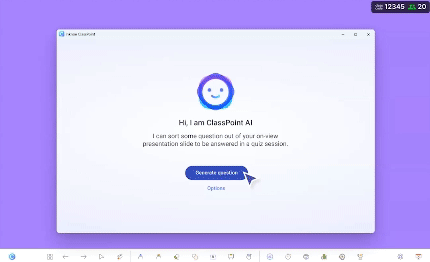In the constantly evolving landscape of education, Artificial Intelligence (AI) has emerged as both a beacon of hope and a source of consternation for educators around the globe. As we wade through this digital revolution, the question on many teachers’ minds is: How can we navigate the challenges of using AI in education?
Let’s dive into this complex yet fascinating subject, dissecting the intricacies and uncovering strategies to harness the power of AI in education effectively.
Understanding the AI Terrain in Education
Before we can address the challenges, it’s crucial to understand the terrain. AI in education can range from personalized learning algorithms and virtual tutors to AI-powered educational games and analytics tools. These technologies promise to revolutionize the way students learn, providing customized educational experiences and insights that were previously unimaginable.
ChatGPT is not the only AI tool out there. Check out these 47 ChatGPT alternatives for teaching.
Top 4 Challenges of Using AI in Education
While AI is revolutionising the way we teach, many educators still face challenges implementing AI seamlessly into their teaching workflow, due to various obstacles and concerns.
#1 Artificial Intelligence is not All-Powerful
In the realm of academia, a plethora of specialized portals abound, offering AI-driven instruments designed to bolster the learning process. But services where real people work still play a stinging and unshakable role in modern education. Yes, Artificial Intelligence is a comfort support. But there are things that a person does, and this cannot be replaced.
Every day, thousands of students face essay writing problems as part of their homework. And they are looking for help from a real person. Particularly noteworthy is the Papersowl platform, a repository brimming with such innovative applications. When students type do my homework into Google, seeking assistance with their academic challenges, they are often directed to this comprehensive service. This unique phrase not only highlights their expertise in addressing individual academic needs but also underscores their commitment to providing a wide array of solutions that cater to various aspects of student life, thereby revolutionizing the way knowledge is acquired and applied.
Keeping Humanity at the Heart of Education

How do we ensure that AI serves as a tool for empowerment rather than exclusion? The key is to maintain a human-centric approach to education.
Human touch is still irreplaceable in the learning process, and there is where a teacher’s role shines. Teachers play an irreplaceable role in mentoring, inspiring, and understanding students in ways that AI cannot replicate. Balancing the efficiency of AI with the empathy of human educators is essential.
Here are 10 ways you can use AI in Education effectively to augment your teaching experience.
Here are a list of AI tools teachers should avoid at all cost due to various indications that they may hinder a holistic and conducive learning experience.
Personalize Your Teaching
One way to ensure human touch in teaching is through personalized teaching. Personalized teaching allows educators to identify individual strengths and weaknesses, and to provide targeted support that can significantly boost a student’s confidence and academic performance. It ensures the recommendations provided by AI are tailored and relevant to each student’s unique needs and learning styles. A highly recommended pedagogy in providing personalized teaching is differentiated instruction.
Many Classroom AI tools can assist teachers in offering personalized education to their students. Imagine a classroom where each student receives individualized lessons tailored to their learning pace, style, and interests. This isn’t a pipe dream but a reality made possible by AI. The technology can analyze a student’s performance in real-time, adjusting the curriculum to challenge them appropriately and address their weaknesses.
By combining human insight and empathy with the analytical power of AI with the empathy and insight of human educators, personalized teaching ensures that the recommendations provided by AI are not only data-driven but also contextually appropriate and sensitive to the nuances of each student’s learning journey.
Keep Student Engagement at the Core of Teaching
Keeping students engaged is an effective way to retain human touch in the age of AI. There are a multitude of ways teachers can achieve student engagement effectively with the help of AI tools. From using AI quiz generators to generate instant quizzes and liven up the teaching atmosphere, to using Machine Learning to provide one-of-a-kind data-driven and immersive learning experience, educators have a wealth of resources at their disposal.

As a start, ClassPoint AI is a great tool for teachers to generate Bloom’s Taxonomy quizzes based on their PowerPoint slides and teaching content.
#2 Ethical Considerations and Bias
A significant challenge of using AI in education is addressing ethical considerations and biases. AI systems are only as unbiased as the data they’re trained on, and there’s a real risk of perpetuating existing inequalities in education.
Learn more on the dangers of AI in education and how to navigate them here.
Tackling Bias Head-On
Bias in AI can lead to unfair or inaccurate educational content and assessments. Teachers must be vigilant, critically evaluating AI tools for bias and advocating for systems that promote fairness and diversity. This involves a continuous learning process, staying informed about the latest AI developments and their implications for equitable education.
Navigating the Data Deluge

With great power comes great responsibility, and in the case of AI, great data. AI systems thrive on data, and the educational sector generates vast amounts of it.
Teachers need to be adept at managing and interpreting this data, ensuring it’s used ethically and effectively to benefit students. The challenge lies in sifting through this data deluge to make informed decisions that enhance learning outcomes.
Check out this EdTech in Schools 101 White Paper which offers a repository of AI tools in education and a guide on navigating and integrating EdTech (AI included) in the classrooms seamlessly and responsibly:
EdTech in Schools 101: A Roadmap to Improve Digital Integration and Digital Literacy in Education
Discover the latest insights and strategies for successful integration of EdTech in schools worldwide. Download now for expert guidance, practical tips, and case studies.
#3 Bridging the Digital Divide
Another challenge in the integration of AI into education is the digital divide. Not all students have equal access to technology, which can exacerbate educational inequalities. Furthermore, due to digital divide, not all students are aware of responsible use of AI. AI can be misused and misguide students towards misinformation and poor decision-making.
Making Technology Accessible to All
Addressing the digital divide requires concerted efforts to provide universal access to technology. This includes investing in infrastructure, affordable devices, and internet access, particularly in underserved communities. Teachers can play a pivotal role in advocating for these resources, ensuring that AI benefits reach every student.

Cultivating Digital Literacy
Beyond access, there’s a need to cultivate digital literacy among students and educators alike. Understanding how to use AI tools effectively and safely is crucial. Teachers must be equipped with the skills and resources to guide students in navigating the digital landscape responsibly, fostering an environment where technology enhances learning without overshadowing the human elements of education.
A common way of misusing AI in the classrooms is using AI to write essays and do homework, hence it is important for teachers to be equipped with the tools and ways to deal with AI plagiarism and fabrication in the classroom while maintaining academic integrity.
Check out the top 8 free AI detectors for teachers.
#4 Professional Development and Support
For teachers to confidently navigate the challenges of teaching with AI, ongoing professional development and support are non-negotiable.
Lifelong Learning for Educators
Embracing AI in teaching requires a commitment to lifelong learning. Educators must continuously update their skills to keep pace with technological advancements. This involves not just technical training but also developing an understanding of the ethical and pedagogical implications of using AI in the classroom.
Building a Supportive Community

No teacher is an island, especially when it comes to integrating AI into education. Building a community of educators who share insights, challenges, and successes can provide invaluable support. Collaborative platforms, professional networks, and educational forums offer spaces for teachers to exchange ideas and strategies for effectively using AI in teaching.
Download this EdTech in Schools 101 White Paper to gain access to a repository of Professional Development Resources and Platforms for teachers:
EdTech in Schools 101: A Roadmap to Improve Digital Integration and Digital Literacy in Education
Discover the latest insights and strategies for successful integration of EdTech in schools worldwide. Download now for expert guidance, practical tips, and case studies.
Conclusion
Navigating the challenges of using AI in education is no small feat, but it’s a journey worth embarking on. By understanding the landscape, addressing ethical considerations, bridging the digital divide, and committing to professional development, educators can harness the potential of AI to transform education.
Let’s embrace these challenges as opportunities to innovate, inspire, and impart wisdom in ways we never thought possible. After all, the goal is not to replace the teacher with technology but to empower educators to guide their students through the digital age with wisdom, compassion, and a touch of AI magic.

